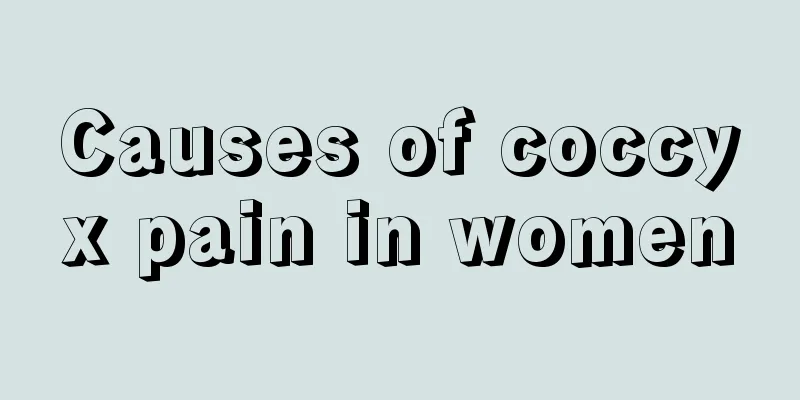Causes of coccyx pain in women

|
In our daily life, many people suffer from coccyx pain due to some reasons, especially women, who are more likely to suffer from coccyx pain. This condition is related to women's pregnancy and childbirth. In many cases, coccyx pain can occur when sitting in one position for a long time. If you are not sure about the cause of the coccyx pain, you can go to the hospital for examination and then receive treatment based on the cause. 1. Anatomical factors Coccyx pain is related to anatomical factors. There are 3 to 5 coccyx vertebrae. The joints between the coccyx vertebrae are connected by fibrous cartilage, and the sacrococcygeal joints are connected in a gap. When injured or chronically strained, the physiological curvature of the coccyx may change, causing instability or deformation of the coccyx and pain. 2. Trauma and chronic strain The pain factors mainly come from the coccyx and the soft tissue around it. Chronic strain during acute injury can cause varying degrees of bleeding, edema, organization, degeneration, spasm and other changes in the soft tissue around the coccyx, causing pain; it can also cause dislocation, fracture, and morphological variation of the coccyx, causing the coccyx to bend forward and enlarge, causing pain. 3. Degenerative changes If you suffer from acute or chronic injuries, it will lead to subluxation of the sacrococcygeal joint, causing the joint to gradually degenerate and become narrow, irregular or petrified, thereby restricting joint movement. Therefore, when the joint moves passively, coccyx pain symptoms will occur. 4. Infection The infection focus in the pelvic area, deep infection reaches the pelvic muscles through lymphatic drainage, which can cause muscle or muscle reflex spasm and produce coccygeal pain. 5. Tumor Chordoma is the most common, but enchondroma or chondrosarcoma may also occur. Caudal glomus tumor can also cause coccygeal pain. Lipoma beside the medullary tissue can cause edema or hernia formation through the thick fascia, causing coccygeal pain. Fat nodules can be touched around the sacrum of such patients. 6. Other factors Damage to the lumbar sacral region, such as slippage, can cause coccygeal pain by compressing the dura mater and nerve roots. Larger central lumbar disc herniation can also lead to the same pathological effects. Functional neurosis and sacral nerve root arachnoiditis can also cause coccygeal pain. |
<<: Symptoms of heart-kidney disharmony in women
>>: Laser surgery on the cervix
Recommend
Can an accidental abortion be clean?
After a woman becomes pregnant, miscarriage may o...
You are my destiny. When will the TV series be broadcast? You are my destiny. txt Baidu cloud
Friends who have watched "The Eternal Love&q...
What are the symptoms of a small uterus?
Each of us lives in this world as an independent ...
Girls have blood in their stool
The main reason girls have blood in their stools ...
Eliminate and eliminate in the tiny needle hole! Radiofrequency ablation treatment for thyroid nodules
Qinhuangdao First Hospital Guo Shuai I had a nodu...
What suppositories are good for gynecological inflammation
In addition to oral medications, many gynecologic...
What are the symptoms of ruptured hymen?
There are many women who have their ruptured hyme...
Why are the leaves of the copper coin grass dry? What should I do if the leaves of the copper coin grass are burnt?
The copper coin grass is very common in life. Bec...
Causes of breast pain
There are many common breast diseases in women. W...
What causes low progesterone?
Progesterone is also known as estrogen or progest...
A famous actor died in the bathroom, possibly due to "heat shock". What is heat shock? How to avoid it?
Recently, Japanese actress Miho Nakayama was foun...
Is it normal to have less morning sickness at 10 weeks of pregnancy?
I believe everyone knows that women will have man...
The three exercises with the best effect on prolonging life, but walking is not one of them? The first one is...
Among hundreds of sports, which ones are most ben...
Is laparoscopy for ectopic pregnancy painful?
Laparoscopic surgery for ectopic pregnancy is per...
I can’t see it and I can’t reach it by rubbing it. How can I get rid of the acne on my back?
Summer is here, and many people can no longer hid...









